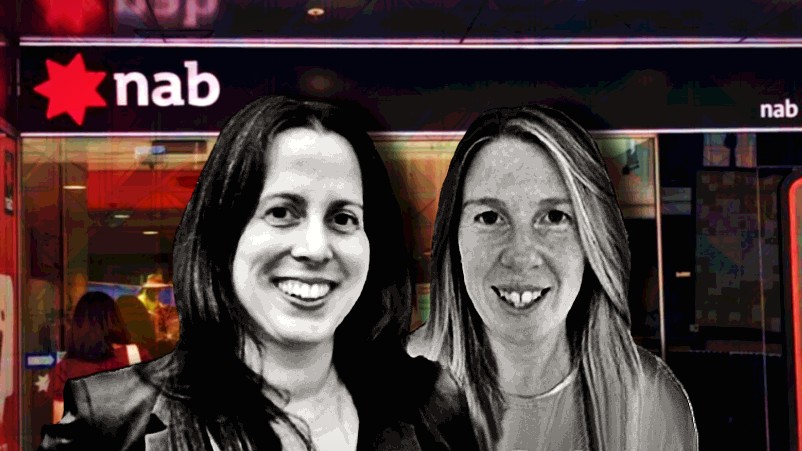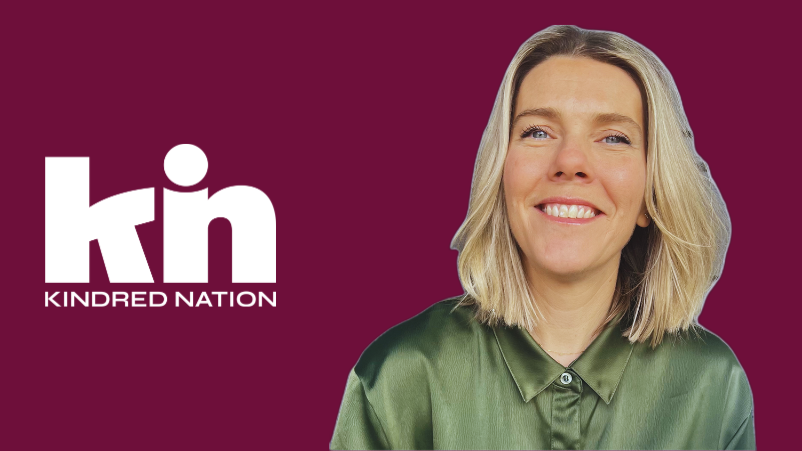Revealed: The key success factors driving NAB's rapid roll out of real-time decisioning

Nab's Jess Cuthbertson and Lisa Marchant
By focusing on sponsorship, team building, technology and prioritisation, overlaid with a governance structure based around the customer, NAB has been able to accelerate rollout of real-time decisioning. It helped NAB had the building blocks for marketing capability already in place. And now, by plugging its new Pega Content Decisioning Hub into current ways of working, the big four bank has built channel scale fast. Jess Cuthberston, Executive, Customer Decisioning and Data Science, and Lisa Marchant, NAB's Head of Customer Decisioning, explain.
What you need to know
- NAB is already banking significant wins from its two-year-old real-time decisioning project such as generating more conversations between customers and bankers and a 3X increase in potential opportunities.
- While the bank lagged behind Commbank and ANZ in the move to what is called Real-Time Interaction Management, NAB had some natural advantages that helped it move quickly, such as a marketing and innovation platform it could plug its Pega decisioning engine into on day one.
- Key executives attribute early successes to the focus on getting top-down and bottom-up sponsorship, its approach to team building, the bank's technology choices, and the ability to prioritise.
- And on the critical issue of governance, NAB built structures that put the customer imperative at the heart of oversight.
People who bank with us expect personalisation. If they don't find it, they'll start switching. We then went back every quarter to give them updates on how we were progressing.
NAB has been able to move aggressively into real-time decisioning since it purchased Pega’s Real Time Interaction management hub in 2022 because of the work it had already done on data and app integration.
The bank was further helped by its approach across four critical areas, according to NAB's Jess Cuthbertson Executive, Customer Decisioning and Data Science, and Lisa Marchant, NAB's Head of Customer Decisioning. Firstly, it was about engaging top-down and bottom-up business sponsors at the same time, while recognising in a tight market that building a team was not about sourcing scarce platform skills. Also vital was maximising leverage of previous technology investments, and finally, building systems that brought use cases to life and in Marchant’s own words, “actually deliver actions”.
Across the top of it all is a governance structure that incorporated a customer decisioning forum and a Customer Council.
The duo spoke in a breakout session at the recent Pegaworld conference in Las Vegas. As Mi3 reported last month, NAB describes its decisioning hub as The Customer Brain.
The bank implemented Pega in 2022 and launched its first “action” in April 2023. Since then, it has scaled the system to a little over 150 next-best actions, said Cuthbertson. She told attendees that to power its ‘customer brain’ next-best action system, NAB runs about 1000 customer data attributes through 800 adaptive machine learning models.
In home lending, through smarter data analytics, customers are matched to NAB bankers, driving a 50 per cent increase in conversations. In turn, this generated 3X more opportunities for the bank. In addition, most opportunities are actioned on the day the conversation was initiated.
Marchant said the decisioning hub is also helping to thwart scammers, where customers with higher payment limits are more at risk. “The brain encourages customers to decrease their limits reducing their exposure to fraud," she said.
Sponsorship
Cuthbertson met the board within the first three months of joining NAB, and described the meeting as important one. "The goal was to align the decisioning strategy around the bank’s overarching bank strategy," she said. “My message to them was this is not simply the science of new technology innovation we're going to play with. It's something that is critical to what we were doing and who we wanted to be at NAB.”
As a result, many conversations with the board were about customer experience, personalisation, and how customer sentiment is shifting.
“People who bank with us expect personalisation. If they don't find it, they'll start switching. We then went back every quarter to give them updates on how we were progressing," she explained.
That had the effect of building sponsorship and support. “It's one thing to talk about a strategy on paper, but we then went back after we delivered our first couple of use cases, [we were] talking about how customers were responding, and what the engagement metrics looked like.”
Eventually, the stakeholders joined the meetings, telling, telling their stories, Cuthbertson said. That last point also reflected another key approach to the project: Bottom-up sponsorship.
Among the key questions Cuthbertson and Marchant asked business leaders in the bank were: “What are the business problems we have? Where do your customers struggle, and how can we better support them?
"We had two or three of these very critical people in the organisation behind us. We started small, running tests with them around how this capability could be integrated into their business," Cutherbertson said.
Team Building
Given the nature of investment required for real-time decisioning – and the scale required to get a worthwhile return – Pega’s addressable market in Australia is quite small. For instance, it prequalifies its potential customers down under by whether they have a million customers, and by its own admission has about a dozen customers (Mi3 believes the number is close to 12 than 20).
That rules out hitting up rivals for staff or trying to find technical capabilities from out of the category. “In Australia, there’s not a lot of people who know Pega. So we were building a team from scratch," Marchant said. "We really looked for people who thought in customer context but had a real appreciation for data.”
While the specific platform skills may be scarce, a wider pool of talent was therefore feasible. Marchant describes these people as great data analytics and marketing folk who understand the mission conceptually.
“They can learn the tooling. And I think that was powerful. We weren't going out trying to find the best Pega experts in the market. We were going out finding the best people that could help contextualise a business issue, use data, then put together some content strategies to bring that back to life.”
One of the things that we chose to do was actually leverage the outbound capability that we had and plug Pega straight into that.
Technology
A key factor that allowed NAB to start extracting value from its decisioning investment was the work already done on its marketing systems. Unlike Commbank, one of the early pioneers of decisioing which built its solutions on the go, or ANZ which had the advantage of a near-greenfield implementation, NAB’s advantage in practical terms was it could plug the content decisioning hub into its current structure (with the usual caveats around integration efforts).
Marchant said that when she attended Pegaworld last year NAB was still early in its journey. “The first question anyone asked me ‘How many channels have you connected? One of the things that’s a bit unique about our journey is that for quite a while NAB has had a reasonably sophisticated marketing and innovation capability that delivered a whole host of outbound experiences, and these were all connected up to the same technology platform.”
“Prior to Pega, we were able to send outbound messages on a batch basis through to all of these channels, including banker, mobile app and internet banking channels. When you log into our mobile app, there's usually a couple of banners or containers and a mini app that you can place notifications in. These were already all hooked up.”
The introduction of Pega triggered a number of conversations in the bank from an architecture perspective to better understand the boundaries between the innovation systems and decisioning systems in relation to this, she said.
“But, one of the things we chose to do was actually leverage the outbound capability we had and plug Pega straight into that.”
That meant from day one, NAB had a critical mass of channels, which Marchant said helped the teams service many of the use cases stakeholders wanted.
“This was a really good way for us to go multi-channel quickly. However, we also knew that inbound is absolutely critical to a decisioning practice. We needed to uplift inbound channels where we felt that was important," she said.
Mobile and internet banking were priorities on this point. “We converted that to real-time back in December last year. We are working to add inbound push. Now we're really thinking about our different banker suites and where real-time becomes important there.”
The transition to real-time was not without complexity. “Marketers took a while to get their heads around in real-time, which is so important,” Cuthbertson said, noting customers buy in real time and benefit when the payoff is in real-time also.
“It took the marketers a little bit of time to get their head around that. I want a decision right now, in the moment for our customer, and that's why it was so important to us to uplift our outbound channels.”
Prioritisation
One of the questions the team needed to address was where to start and how to make new choices about which work to prioritise. (In Mi3’s experience a lot of project teams get themselves into trouble by not addressing this earlier.)
Per Marchant: “We were looking for two things. We're looking for business leaders who were really willing to jump on board when you're testing, building, and developing actions with a new capability. And we're also looking for areas where we could demonstrate impact.”
That led to work initially with home loans and mobile banking. Home lending use cases meant focusing on depth in a particular domain discipline, while digital and mobile gave the team breadth to test use cases across all of the bank’s large digitally active base.
“We chose home lending because we've got a great stakeholder. Also, home lending connects through our bank network, so we thought that was really important to actually help build excitement and sponsorship at that level," she said.
By focusing on home lending, the team was able to tailor actions for a set of customers where there are overlapping actions.
“The second area we chose to focus on was mobile app. With 10 million customers logging into our mobile app every single year, that's a huge opportunity for us to be able to connect with customers in a way that is relevant across the sales, service, or engagement messages," Marchant said.
Home lending use cases meant focusing on depth in a particular domain discipline while digital and mobile gave the team breadth to test use cases across all of the bank’s large digitally active base.
Governance
NAB set up two core forums to help govern the process of building what it refers to internally as the customer brain. According to Marchant, “The first is a Customer Decisioning Forum, which is a forum that actually governs how we're using that standard set of data."
That group meets several times a year.
“We also set up a Customer Council, which consists of a number of executives across both digital and marketing and across data and analytics to actually manage the customer experience.
“The Customer Council has visibility around what goes into customer brain decisions we're making when we start talking through what we're doing with weightings. We engage that counsel to make sure [we’re doing] the right things around the customer experience, and that everyone's comfortable with what we're signed up for.”
Marchant also credited the Customer Council with bringing everything back to the overarching strategy of a bank. “You know, who are our customers? How best do we serve them?”
The project is now humming, notching up wins, and NAB is accelerating the process of adding next-best actions. The first NAB went live in April 2023 and within a year, there were over 120 actions in play. By the time Cutherbertson and Marchant took to the stage at the Pega conference, the number of next-best actions had climbed to over 150.
- The author travelled to Pegaworld as a guest of Pega, which paid for his travel and accommodation as part of a European and APAC media tour.


